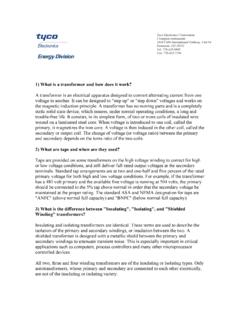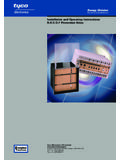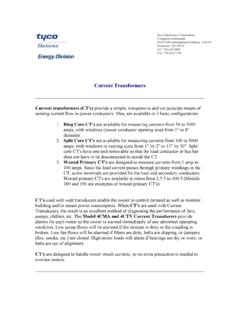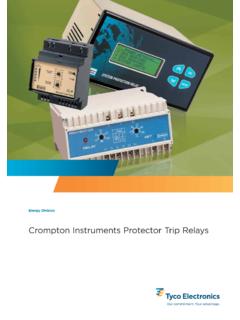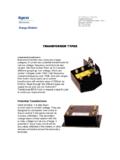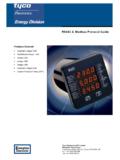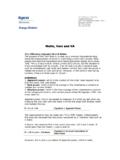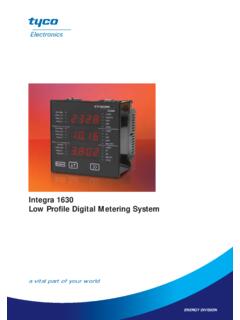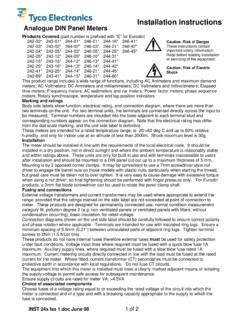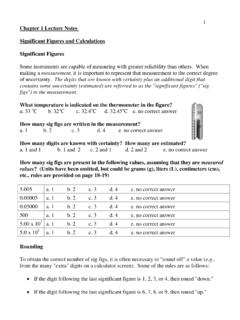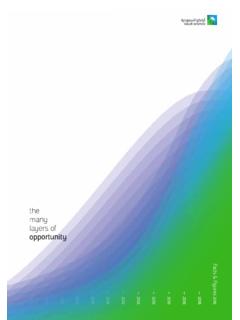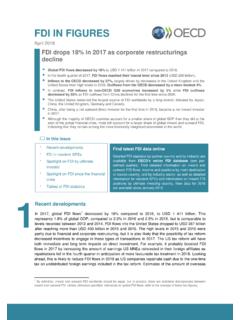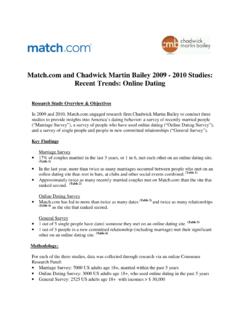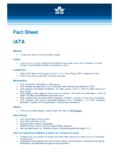Transcription of Copper wire figures - Te Connectivity
1 Tyco Electronics Corporation Crompton Instruments 1610 Cobb International Parkway, Unit #4 Kennesaw, GA 30152 Tel. 770-425-8903 Fax. 770-423-7194 Copper wire figures NOTE: This information and the circuits are provided as is without any express or implied warranties. While effort has been taken to ensure the accuracy of the information contained in this text, the authors/maintainers/contributors assume no responsibility for errors or omissions, or for damages resulting from the use of the information contained herein. The contents of the articles below might be totally inaccurate, inappropriate, or misguided.
2 There is no guarantee as to the suitability of said circuits and information for any purpose. AWG Table 1 AWG is thousandths of an inch 2 AWG is thousandths of an inch 5 AWG is thousandths of an inch 10 AWG is thousandths of an inch 20 AWG is thousandths of an inch 30 AWG is thousandths of an inch 40 AWG is thousandths of an inch The table in ARRL handbook warns that the figures are approximate and may vary dependent on the manufacturing tolerances. If you don't have a chart handy, you don't really need a formula. There's several handy tricks: Solid wire diameters increases/decreases by a factor of 2 every 6 gages, " " " " " 3 every 10 gages, " " " " " 4 every 12 gages, " " " " " 5 every 14 gages, " " " " " 10 every 20 gages, " " " " " 100 every 40 gages, With these, you can get around alot of different AWGs and they cross check against one another.
3 Start with solid 50 AWG having a 1 mil diameter. So, 30 AWG should have a diameter of ~ 10 mils. Right on with my chart. 36 AWG should have a diameter of ~ 5 mils. Right on with my chart. 24 AWG should have a diameter of ~ 20 mils. Actually ~ 16 AWG should have a diameter of ~ 50 mils. Actually ~ 10 AWG should have a diameter of ~ 100 mils. Actually ~ If you are more interested in current carrying ability than physical size, then also remember that a change of 3 AWG numbers equals a doubling or halving of the circular mills (the cross sectional area).
4 Thus, if 10 AWG is safe for 30 amps, then 13 AWG (yeah, hard to find) is ok for 15 amps and 16 AWG is good for amps. The wire gauge is a logarithmic scale base on the cross sectional area of the wire . Each 3-gauge step in size corresponds to a doubling or halving of the cross sectional area. For example, going from 20 gauge to 17 gauge doubles the cross sectional area (which, by the way, halves the DC resistance). So, one simple result of this is that if you take two strands the same gauge, it's the equivalent of a single wire that's 3 gauges lower. So two 20 gauge strands is equivaent to 1 17 gauge.
5 wire Gauge Resistance per foot 4 .000292 6 .000465 8 .000739 10 .00118 12 .00187 14 .00297 16 .00473 18 .00751 20 .0119 22 .0190 24 .0302 26 .0480 28 .0764 Current ratings Most current ratings for wires (except magnet wires) are based on permissible voltage drop, not temperature rise. For example, mm^2 wire is rated at 3A in some applications but will carry over 8 A in free air without overheating. You will find tables of permitted maximum current in national electrical codes, but these are based on voltage drop (not the heating which is no problem in the current rating those codes give).
6 Here is a small current and AWG table taken from the Amateur Radio Relay Handbook, 1985. AWG dia circ open cable ft/lb ohms/ mils mils air A Amp bare 1000' 10 10380 55 33 12 6530 41 23 14 4107 32 17 Mils are .001". "open air A" is a continuous rating for a single conductor with insulation in open air. "cable amp" is for in multiple conductor cables. Disregard the amperage ratings for household use. To calculate voltage drop, plug in the values: V = DIR/1000 Where I is the amperage, R is from the ohms/1000' column above, and D is the total distance the current travels (don't forget to add the length of the neutral and hot together - ie: usually double cable length).
7 Design rules in the CEC call for a maximum voltage drop of 6% (7V on 120V circuit). Resistivities at room temp: Element Electrical resistivity (microohm-cm) Aluminum Copper Gold Silver Platinum This clearly puts silver as the number one conductor and gold has higher resistance than silver or Copper . It's desireable in connectors because it does not combine well with other materials so remains relatively pure at the surface. It also has the capability to adhere to itself (touch pure gold to pure gold and it sticks together) which makes for very reliable connections.
8 Thermal conductivity at room temp: W/cm C silver Copper gold platinum diamond bismuth iodine This explains why diamonds are being used for high power substrates now. That's man-made diamonds. Natural diamonds contain sufficient flaws in the lattice that the phonons (heat conductors) get scattered and substantially reduce the ability to transport the heat. Copper wire resistance table AWG Feet/Ohm Ohms/100ft Ampacity* mm^2 Meters/Ohm Ohms/100M 10 .204 30.
9 669 12 .324 20 14 .516 15 16 .818 10 18 5 20 22 24 26 28 These Ohms / Distance figures are for a round trip circuit. Specifications are for Copper wire at 77 degrees Fahrenheit or 25 degrees Celsius.
10 wire current handling capacity values A/mm2 R/mohm/m I/A 6 55 10 76 16 105 25 140 35 173 50 205 70 265 Information about 35 mm2 Cu wire According Str berg TTT 35mm2 Copper wire can take continuous current of 170A on free air and 200 A on ground. The wire can handle 5 kA short circuit current for 1s. DC resistance of the wiure is Mains wiring current ratings In mains wiring there are two considerations, voltage drop and heat buildup.
